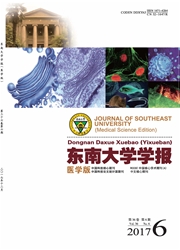

 中文摘要:
中文摘要:
目的:研究经典H-2基因在C57小鼠中枢神经系统中的表达谱,设计合成地高辛标记的经典H-2mRNA探针。方法:利用PCR扩增出针对经典H-2分子的特异性保守片段,然后将PCR产物纯化后与pGEM-T Easy载体连接,转化到大肠杆菌DH5α中。测序后获得目的基因的单克隆,扩增并提取质粒,采用体外转录的方法合成地高辛标记的经典H-2 mRNA的正、反义RNA探针。运用原位杂交方法分析经典H-2基因在C57小鼠中枢神经系统中的表达情况。结果:成功构建了321 bp经典H-2 mRNA的正、反义探针,原位杂交方法检测到经典H-2 mRNA在出生后15 d小鼠中枢神经系统中反义探针有杂交信号,正义探针无杂交信号。结论:正义探针无杂交信号表明合成的321 bp经典H-2 mRNA反义探针具有特异性。
 英文摘要:
英文摘要:
Objective: In order to find out the expression pattern of classical H-2 in the central nervous system of C57 mice thus synthesize RNA probe marked by Digoxigenin.Methods: The probes for PCR amplification was designed specifically to amplify the classical H-2 molecules.The PCR product was purified and later linked into pGEM-T Easy Vector.The plasmid was sequenced for confirmation the correct sequence of the gene.The sense and antisense RNA probe were synthesized by using the method of in vitro transcription of the vector.The expression of classical H-2 mRNA in the central nervous system of mice was analyzed by the method of in situ hybridization by using this probe.Results: 321 bp classical H-2 mRNA's sense and anti-sense probes were successfully conformed.With in situ hybridization,the anti-sense probe yielded hybridization signal while sense probe had no signal in the central nervous system of P15 mice.Conclusion: The sense probe is used as a negative control and it yields no signal,thus demonstrating the specificity of the anti-sense probe.
 同期刊论文项目
同期刊论文项目
 同项目期刊论文
同项目期刊论文
 The Expression Pattern of Classical MHC Class I Molecules in the Development of Mouse Central Nervou
The Expression Pattern of Classical MHC Class I Molecules in the Development of Mouse Central Nervou 期刊信息
期刊信息
